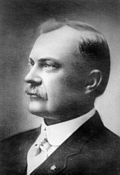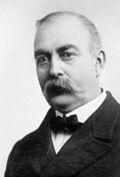| |||||||||||||||||||||||||||||||||||||
| |||||||||||||||||||||||||||||||||||||
 Results by county Haines: 30–40% 40–50% 50–60% Hawley: 30–40% 40–50% Martin: 30–40% 40–50% | |||||||||||||||||||||||||||||||||||||
| |||||||||||||||||||||||||||||||||||||
| Elections in Idaho |
|---|
 |
The 1912 Idaho gubernatorial election was held on November 5, 1912. Republican nominee John M. Haines defeated Democratic incumbent James H. Hawley with 33.24% of the vote.

